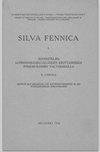Optimal location of laminated beech production plants within the solid hardwood supply network in Austria
IF 1.7
3区 农林科学
Q2 FORESTRY
引用次数: 5
Abstract
Due to changes in forest management in various European countries, hardwood forest areas and amounts will increase. Sustainable and individual utilization concepts have to be developed for the upcoming available resource. Studies conclude that there is low potential for hardwoods in the traditional appearance market thus the application areas have to be extended to new structural innovative products. This paper examines the extension to a future laminated beech wood supply network which would be a combination of already existing and new production facilities. For a better future use of hardwood raw materials it is necessary to consider the entire supply chain. This also better shows a total hardwood value chain. Therefore, this paper provides data to the solid hardwood business and develops a mixed integer linear programming to design a laminated beech wood supply network. The model is applied to Austria as the sample region. It covers the important strategic decisions where to locate a downstream facility within the existing production network with the lowest supply network cost. Fourteen scenarios are developed to examine various future network configurations. Results about optimal material flows and used sawmills as well as downstream production facilities are presented in form of material and financial performances. Two optimal laminated beech production locations are determined by the calculated scenarios results, and the impact of a new sawmill is analyzed which is focused on beech.叠层山毛榉生产工厂在奥地利实心硬木供应网络中的最佳位置
由于欧洲各国森林管理的变化,阔叶林的面积和数量将会增加。必须为即将获得的资源制订可持续和个人利用的概念。研究得出结论,传统外观市场的硬木潜力不大,因此应用领域必须扩展到新的结构创新产品。本文探讨了未来层压山毛榉木材供应网络的扩展,该网络将是现有和新生产设施的结合。为了更好地利用硬木原料,有必要考虑整个供应链。这也更好地展示了整个硬木价值链。因此,本文为实心硬木企业提供数据,并发展混合整数线性规划来设计层叠山毛榉木材供应网络。该模型以奥地利为样本地区。它涵盖了在现有生产网络中以最低供应网络成本定位下游设施的重要战略决策。开发了14个场景来检查各种未来的网络配置。优化的物料流和使用的锯木厂以及下游生产设施的结果以材料和财务绩效的形式呈现。根据计算结果确定了两个最优的层压山毛榉生产地点,并以山毛榉为重点分析了新建锯木厂的影响。
本文章由计算机程序翻译,如有差异,请以英文原文为准。
求助全文
约1分钟内获得全文
求助全文
来源期刊

Silva Fennica
农林科学-林学
CiteScore
3.50
自引率
11.10%
发文量
21
审稿时长
3 months
期刊介绍:
Silva Fennica publishes significant new knowledge on forest sciences. The scope covers research on forestry and forest ecosystems. Silva Fennica aims to increase understanding on forest ecosystems, and sustainable use and conservation of forest resources. Use of forest resources includes all aspects of forestry containing biomass-based and non-timber products, economic and social factors etc.
 求助内容:
求助内容: 应助结果提醒方式:
应助结果提醒方式:


